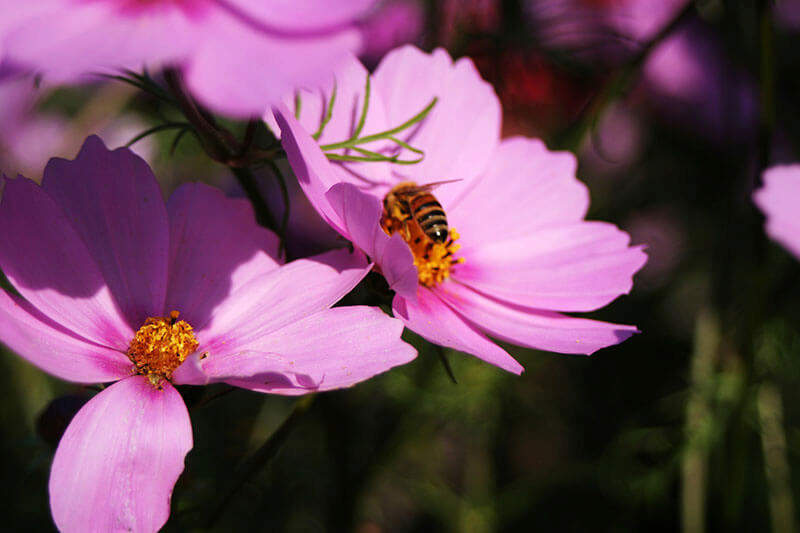How to Attract Butterflies and Hummingbirds to Your Yard
Alone, a garden full of bright, cheery flowers is a feast for the eyes, but when those blooms feed important pollinators, such as bees, butterflies and hummingbirds, the garden promotes a natural, eco-rich environment.
Whether you grow fruits and vegetables or annual ornamentals in your garden, you need pollinators — insects and animals that move pollen grains from one flower to another. The process of pollination fertilizes the blooms, resulting in seeds and fruit.1 Without pollinators, plants cannot reproduce.
Bees are the most significant pollinators in North America, but butterflies and hummingbirds also help pollinate plants.2 To attract and keep pollinators in the garden, provide them with an environment that meets their needs.
Attracting Pollinators: Nectar and Habitat
All pollinators require nectar, as well as a safe habitat in which to nest and breed. About 70% of North America's bees are ground nesters that need access to the soil to build their nests.2 Wood-nesting bees make their homes in old wood, logs or stumps, while bumble bees nest in spaces protected from the weather, such as in thick, tall grass. To encourage bees in your yard, provide a variety of safe places to nest and easily accessible sources of food, such as the nectar provided by flowers.
Hummingbirds nest in trees, vines and shrubs, while butterflies nest in protected areas such as bushes, tall grass or leaf piles. Butterflies require a combination of nectar from flowers and nutrients provided by damp areas, such as mud puddles.2 Red flowers attract both butterflies and hummingbirds, but hummingbirds are particularly attracted to scarlet blooms, such as zinnias.
Nature doesn't always provide the perfect conditions to keep pollinators in your yard, but you can provide sources of nectar and a puddling station to encourage them to stay.

Planting Wildflowers for Nectar
Wildflowers are not fussy about soil conditions, but they do require at least 6 hours of sunlight a day. Choose your location carefully, and then prepare your wildflower garden in spring or late fall, following these steps:
- Use a tiller or garden shovel to loosen the top 3 inches of soil. Loosening the soil makes it easier to remove existing grass and weed roots.
- Add an all-purpose fertilizer, such as Lilly Miller All Purpose Lawn & Garden Food 16-16-16, which contains fast-acting ingredients to encourage healthy plant growth, or Pennington Rejuvenate Plant Food Rose & Flower 4-6-3 to revitalize your soil and encourage more blooms.
- Apply seeds by hand or with a hand-held spreader.
- Lightly rake soil over the seeds so that they are covered by about 1/8 inch of soil.
- Water thoroughly after planting and keep the soil consistently moist until the seedlings are a few inches tall. Continue to water as needed when the ground is dry 1 inch below the surface of the soil.
Creating a Simple Puddling Station
When pollinators gather around damp, wooded areas or puddles, it's called puddling.3 Butterflies and bees accumulate nutrients from mud puddles and tree sap. You can make sure your landscape offers these nutrients by adding a simple puddling station to your wildflower garden. Here's how:
- Select a location in full sun, in or near your wildflower garden. Puddling stations can sit directly on the ground or on a platform, such as a small table or tree stump, for better accessibility and butterfly viewing.
- Fill a large flower pot saucer with all-purpose sand, and then add enough water so that the sand is moist but not submerged.
- Add water as necessary over time to keep the sand moist.
With their habitat, food and water needs met, pollinators will return each year to nest and reproduce in your garden. Whether you are planting specifically for bees, butterflies and hummingbirds, or you just want to add a flower garden to enhance the beauty of your space, you can support a healthy environment by growing wildflower blooms.
Lilly Miller is a registered trademark of Central Garden & Pet Company.
Sources:
- What is “Pollination" & What is a “Pollinator"?, U.S. Forest Service
- Mace Vaughan and Eric Mader, "Pollinator Biology and Habitat," Natural Resources Conservation Service, July 2008
- Karen Garland, "Fluttering through Gardening: Creating a Butterfly Habitat," University of Georgia Extension



